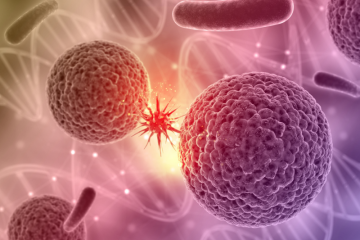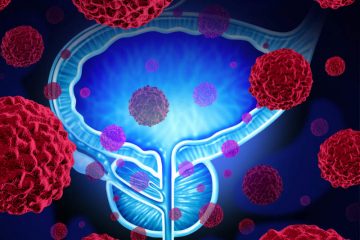What is lung cancer?
Your body is made up of many different types of cells. Normally, your body tightly controls the production of new cells when they’re needed. Cancer develops when certain cells escape from your body’s control and start to change. These abnormal cells, also called cancer cells, start to increase and grow to form a lump. This is called a tumour.
If the cancer starts in your lung, it’s called primary lung cancer. If it starts in another part of your body and spreads to affect your lung, it’s called secondary lung cancer.
There are many different types of lung cancer. The two main types are:
- non small cell lung cancer (NSCLC): This is the most common kind of lung cancer. There are three common types of non small cell lung cancer: adenocarcinoma, squamous cell carcinoma and large cell carcinoma.
- small cell lung cancer (SCLC): This is much less common. It usually spreads more quickly and is often at an advanced stage when it’s diagnosed.
Causes of lung cancer
Anyone can develop lung cancer, but around 90% of cases occur in people who smoke or who used to smoke. Your risk of getting lung cancer increases with the number of cigarettes you’ve smoked and the number of years you’ve been a smoker. If you stop smoking, the risk gets lower over time – after 10 years, your risk of lung cancer falls to half that of a smoker.
Breathing in other people’s smoke over a long period can also increase your risk of getting lung cancer. Other environmental factors, such as exposure to asbestos, can increase the risk as well.
People who’ve never smoked are more likely to develop one particular type of lung cancer called adenocarcinoma.
Lung cancer usually affects people over the age of 60. Younger people can develop lung cancer, but this is rare.
Symptoms of lung cancer
You often won’t have any symptoms of lung cancer until a tumor becomes quite large. This means it might only be discovered when you have an X-ray or scan for a different reason.
As your condition progresses, you’ll begin to experience symptoms, such as:
- a cough
- feeling out of breath
- chest pain
- feeling tired
- appetite loss
- weight loss
- a hoarse voice
- blood in your mucus or phlegm
If you have these symptoms, you should see your doctor. Having these symptoms doesn’t necessarily mean you have lung cancer – they’re common and have many different causes. People with long-term lung disease might already have many of them. But it’s very important to tell your doctor if your usual symptoms change or become worse.
If you have a tumor that has spread outside your lungs, the first symptom might not come from your chest at all. In this case, symptoms might include:
- back pain
- bone pain or fracture
- nerve or brain damage – this might affect walking, talking, behaviour or memory
- confusion
- swallowing difficulties
- jaundice – when your skin or eyes become yellow
Diagnosing lung cancer
- a CT scan: this uses a special X-ray machine to produce a detailed image of the inside of your body
- a biopsy: this is when a sample of tissue is taken from the tumour
- a bronchoscopy: this is when your doctor uses a thin, flexible telescope, called a bronchoscope, to look inside your lungs. The bronchoscope is passed through your nose or mouth and down your windpipe. If the tumour is visible, your doctor can take a sample
- an endobronchial ultrasound (EBUS): this is similar to a bronchoscopy. It uses a thin, flexible tube like a bronchoscope, which has an ultrasound scanner in the tip. This is passed into the windpipe through the mouth. It allows the doctor to scan and take tissues samples of lymph nodes in your chest
- PT-CT scan: this is a painless procedure where you’re injected with a slightly radioactive substance which can be detected by a scanner to show if the cancer has spread to other areas of your body
Treatment for lung cancer
There are a few different types of surgery. The surgeon might remove a section of your lung or your whole lung.
Drug therapies
These include:
- chemotherapy: These are medications that attack cancer cells. They may be delivered straight into your bloodstream through a drip or you might have injections or tablets.
- targeted treatments: These are medicines that stop the genetic mutations that cause some types of lung cancer.
- immunotherapies: These are medicines that work on the immune system in the body to enhance its response to cancer cells.
Radiotherapy
This treatment uses high-energy X-rays to destroy cancer cells.
Palliative care
These are treatments to help reduce your symptoms and improve your quality of life. This includes controlling pain and symptoms such as fatigue, anxiety and breathlessness. Palliative care is there to provide support at all stages of cancer. There’s evidence to show that in some cases, early palliative care can lead to significant improvements in your quality of life and mood.
When your treatment ends, you should have a follow-up appointment within six weeks to discuss your ongoing care. Your cancer nurse specialist will be an important contact during and following your treatment. Your GP can tell you if there are any community-based cancer nurse specialists in your area.
Who’s affected
Lung cancer mainly affects older people. It’s rare in people younger than 40, and the rates of lung cancer rise sharply with age. Lung cancer is most commonly diagnosed in people aged 70-74.
Although people who have never smoked can develop lung cancer, smoking is the main cause (accounting for over 85% of cases). This is because smoking involves regularly inhaling a number of different toxic substances.
Outlook
Lung cancer doesn’t usually cause noticeable symptoms until it’s spread through the lungs or into other parts of the body. This means the outlook for the condition isn’t as good as many other types of cancer.
Overall, about 1 in 3 people with the condition live for at least a year after they’re diagnosed and about 1 in 20 people live at least 10 years.
However, survival rates can vary widely, depending on how far the cancer has spread at the time of diagnosis. Early diagnosis can make a big difference.


